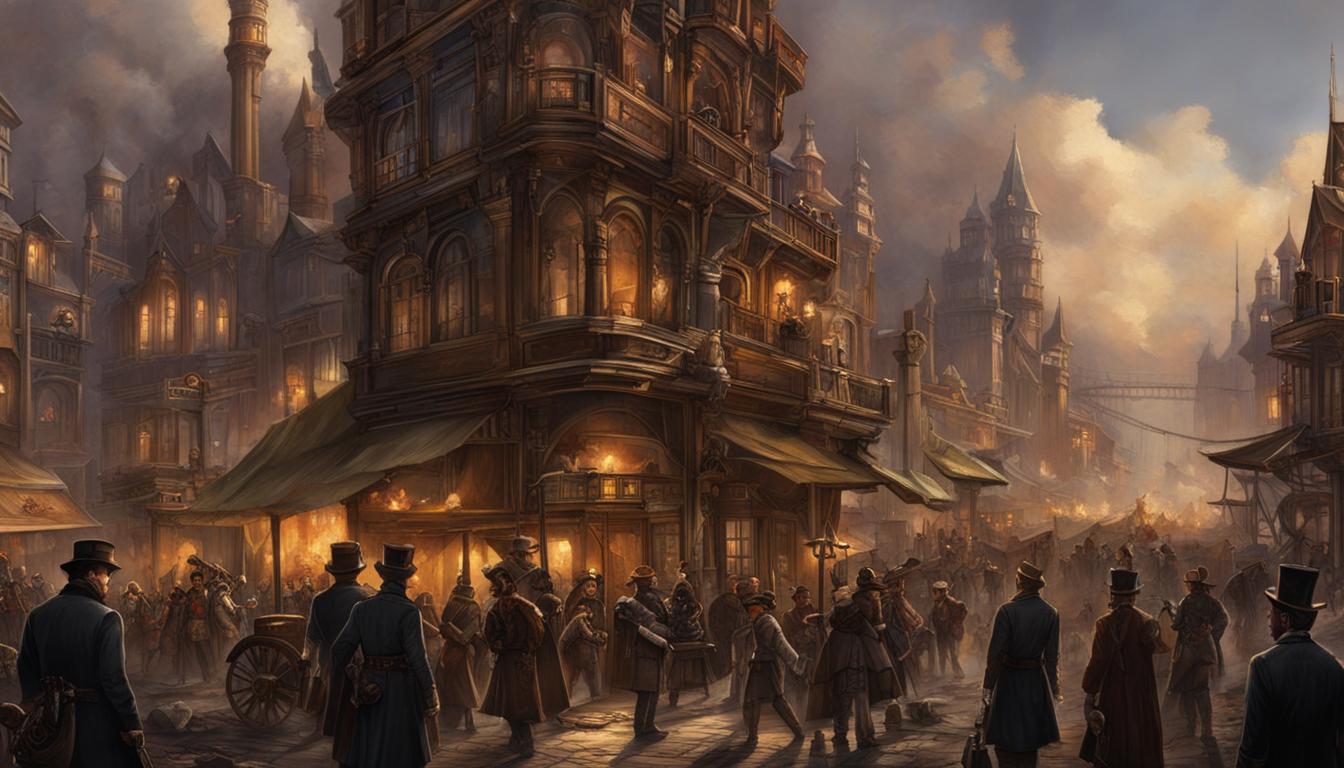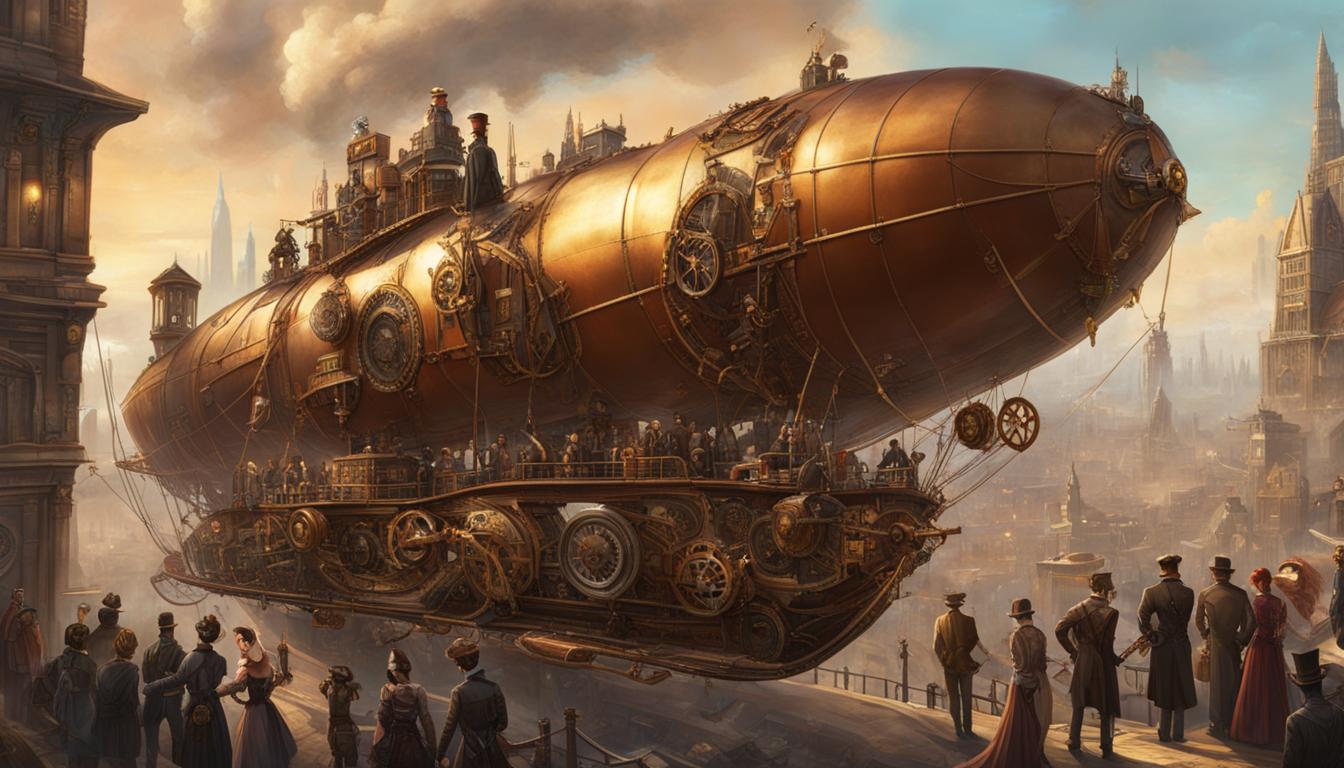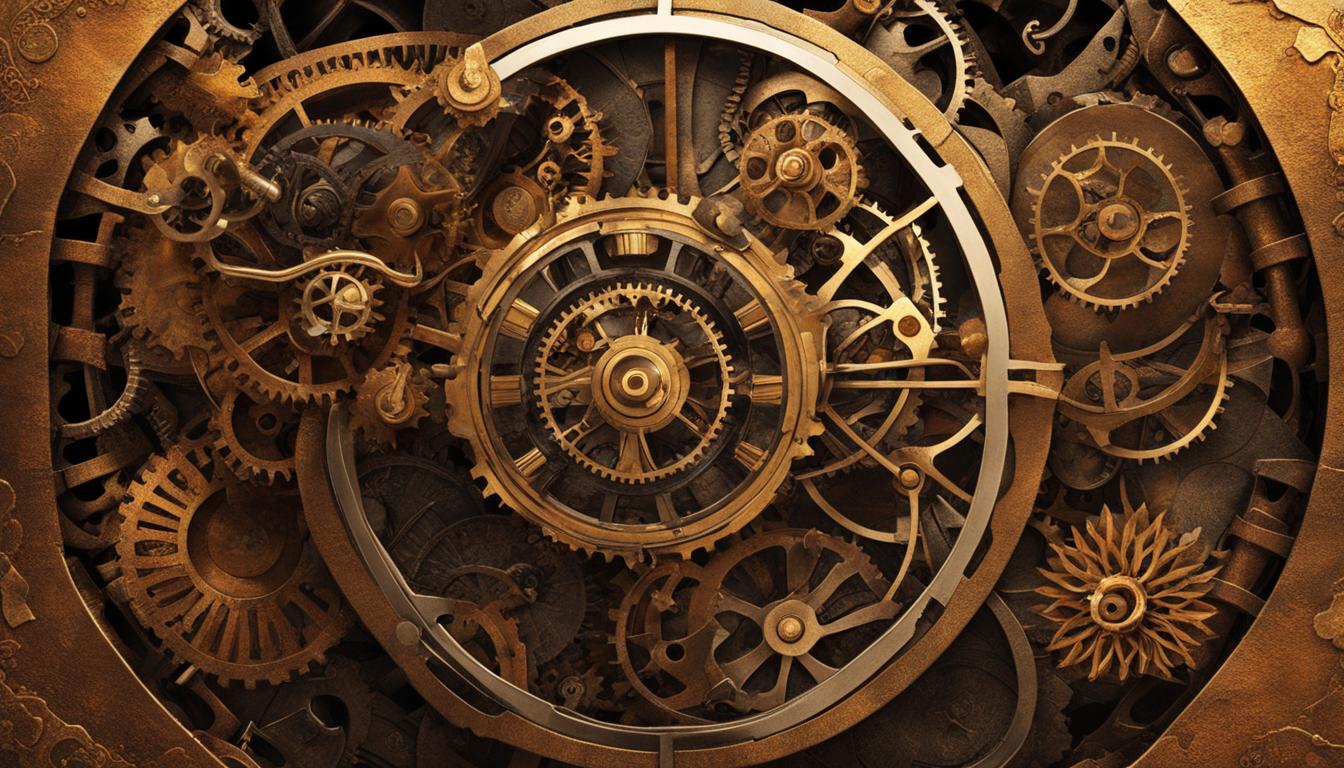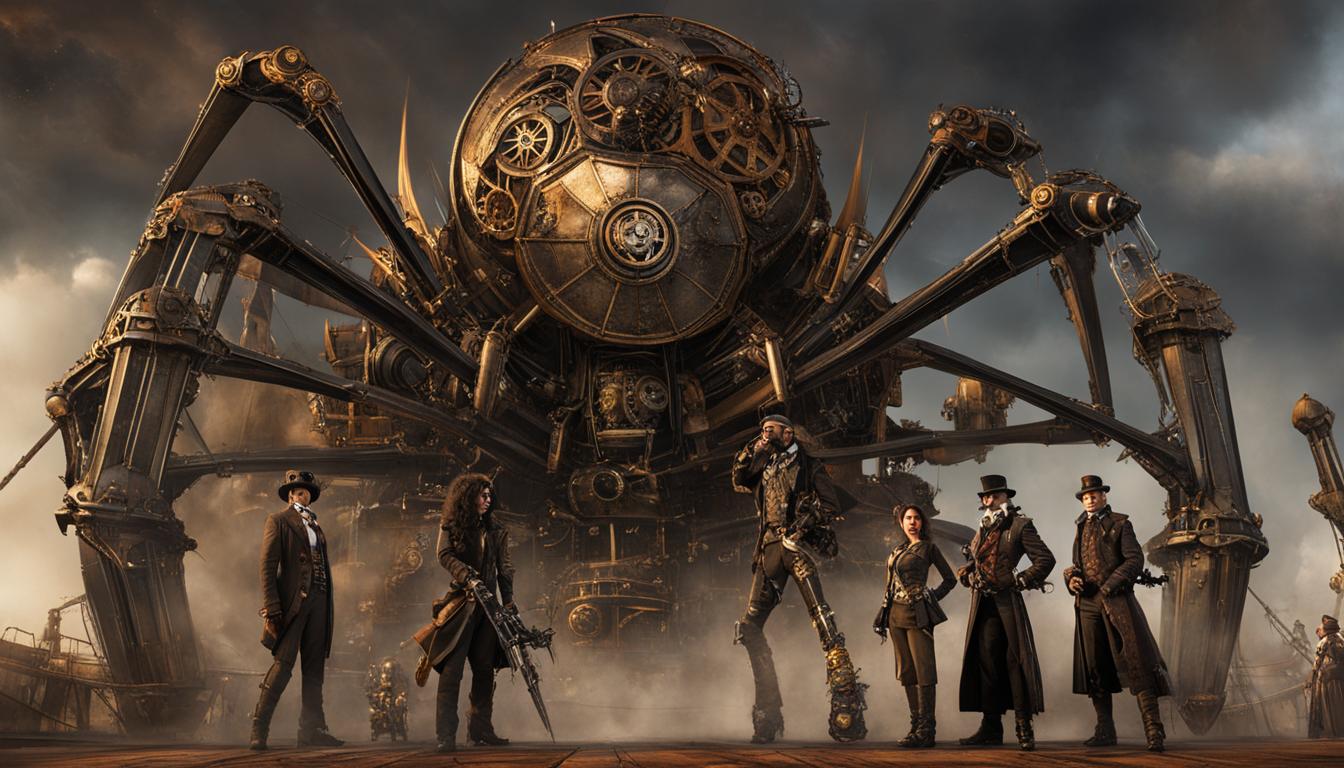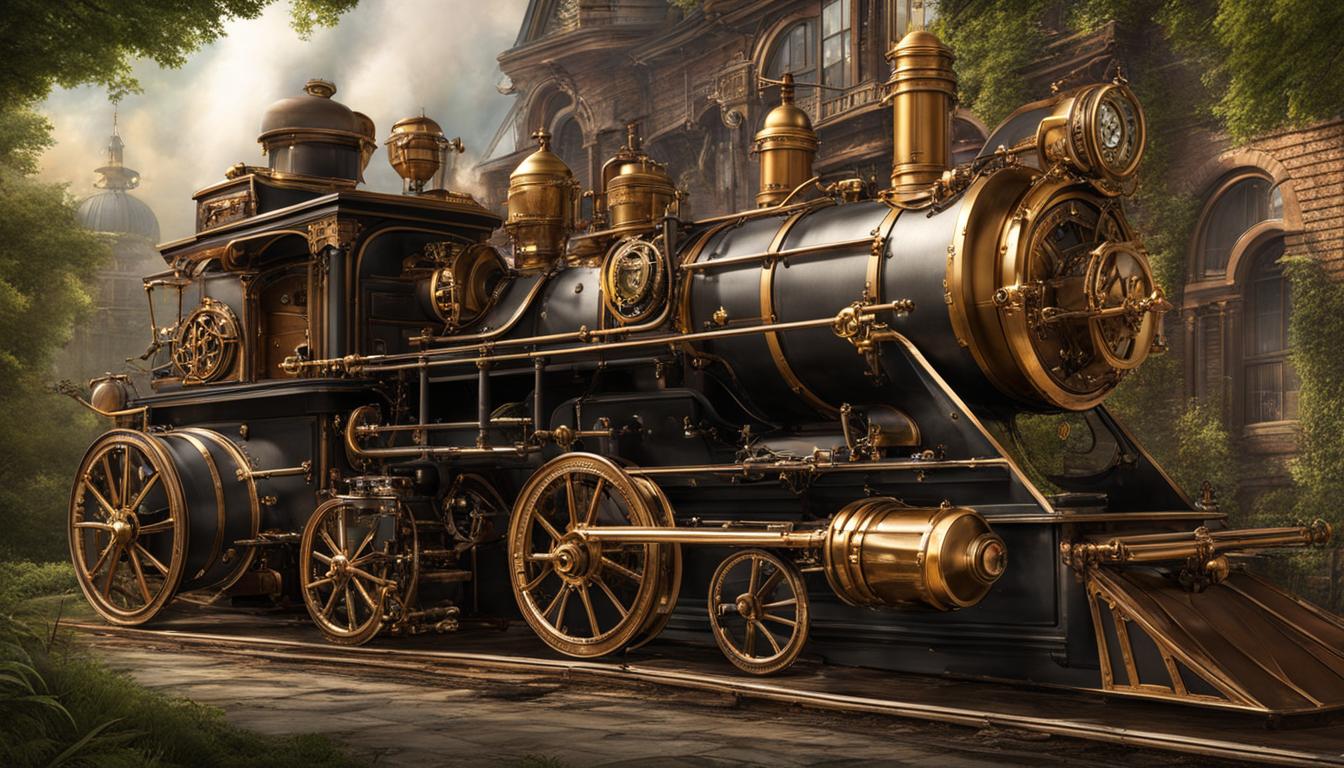In the realm of literature, steampunk offers a unique and imaginative lens through which to explore colonialism and empire. This genre, characterized by its fusion of Victorian aesthetics and advanced steam-powered technology, provides a fresh take on the complexities and consequences of imperialistic endeavors. Steampunk narratives critique the British empire, delve into post-colonial themes, and present alternate colonial histories. Let us embark on a journey through the intricate world of steampunk and discover its intriguing perspective on empire.
Key Takeaways:
- Steampunk literature offers an imaginative and creative critique of the British empire.
- The genre explores post-colonial themes, shedding light on the complex histories of colonialism.
- Steampunk narratives reimagine and reconstruct colonial histories in alternate worlds.
- Authors present unique and sometimes fantastical depictions of imperial cultures.
- Steampunk stories delve into the dynamics between empire and rebellion, exploring power dynamics and resistance.
Steampunk’s Alternate Colonial Histories
In the realm of steampunk literature, authors embark on a fascinating endeavor to construct alternate colonial histories set in imaginative worlds. These captivating narratives transport readers to colonial adventures infused with a steampunk twist, where technology and industrialization shape the course of empires. Victorian imperialism blends seamlessly with the realms of fantasy and science fiction, offering a unique portrayal of imperial cultures.
“Steampunk writers seamlessly merge the splendors of Victorian imperialism with fantastical elements, creating a captivating blend of history and imagination.”
Through the lens of steampunk, readers are introduced to societies molded by an amalgamation of historical truths and whimsical inventions. The genre delves deep into the multifaceted facets of empire, presenting vibrant and sometimes fantastical depictions of colonial realms. These intricate worlds offer a fresh perspective on imperial power, challenging traditional notions of conquest and exploration.
Steampunk’s Interpretation of Imperial Cultures
One of the most intriguing aspects of steampunk literature is its portrayal of imperial cultures. Authors skillfully weave together elements of tradition, technology, and mysticism to create unique societies that reflect both the grandeur and flaws of empire. The vivid descriptions of cultural customs and norms provide readers with a rich understanding of the complexities inherent in colonized societies.
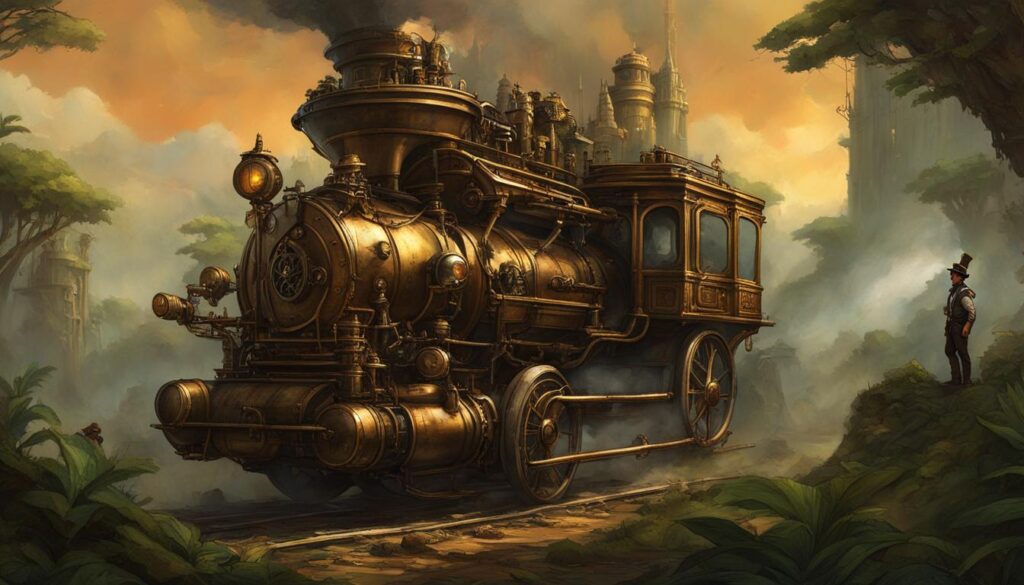
Steampunk Adventures: A Tale of Power and Resistance
| Steampunk Narrative | Main Themes |
|---|---|
| “Clockwork Rebellion: An Airship Adventure” | Resistance against oppressive empire, the power of technology in revolution |
| “The Steam Chronicles: Shadows of Empire” | Exploration of colonial legacies, cultural assimilation, and indigenous resistance |
| “Aetheric Adventures: Conquest of the Brass Kingdom” | Exploration of imperial ambitions, the struggle for independence in a steampunk world |
In these captivating steampunk adventures, readers are transported to alternate realities where rebellion against empire takes center stage. These narratives provide an opportunity to explore the motivations and consequences of colonial endeavors, encouraging a deeper examination of the power dynamics at play. Through the immersive storytelling and vivid world-building, steampunk literature invites readers to consider the role of rebellion in shaping historical narratives and challenging the status quo.
Native Cultures in Steampunk Worlds
Steampunk literature takes readers on a captivating journey through alternate worlds, where native cultures play a significant role. These narratives provide a unique perspective on the intricate dynamics between colonial legacies and indigenous populations. Steampunk authors skillfully intertwine elements of technology, culture, and history to shed light on the impact of empire on these marginalized societies.
Through the lens of steampunk, native cultures in these fantastical worlds are presented with great detail and care. Authors delve into the complexities of cultural exchange, exploring how indigenous populations navigate the challenges of assimilation, resistance, and survival. By highlighting the strength, resilience, and rich traditions of these native cultures, steampunk literature challenges traditional notions of imperialism and brings attention to the voices and experiences often overlooked in historical narratives.
“In every whir of the steam-powered machines and every gust of steam-filled air, steampunk literature unravels the stories of native cultures defying and surviving the legacy of colonialism. The genre serves as a compelling platform to examine the struggles faced by these communities, the battles against erasure and the quest for autonomy. With each turn of the page, readers are transported to worlds where native cultures thrive, resist, and ultimately carve out their own destinies.”
Steampunk’s view on colonial legacies is not just limited to surface-level exploration. It dives deep into the intricate layers of power dynamics, examining how indigenous populations reclaim their identities while simultaneously navigating the tumultuous aftermath of colonization. These narratives invite readers to question the lasting effects of empire and consider the resilience and agency of native cultures in the face of adversity.
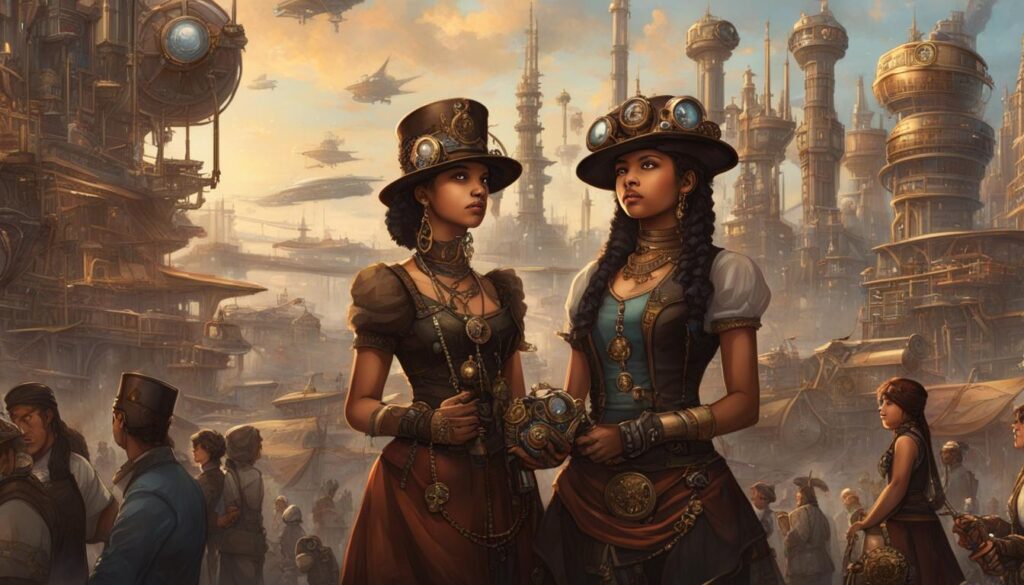
| Steampunk Novel | Main Native Culture | Colonial Impact |
|---|---|---|
| The Airship Explorer | The Skyborn Tribe | Adapted to utilize steam technology while preserving traditional values. |
| The Clockwork Rebellion | The Mechanist Clan | Struggle against the exploitation of their technological advancements by colonizers. |
| Steam and Shadows | The Emberheart Tribe | Fight against cultural appropriation and seek to reclaim their ancestral lands. |
Steampunk Novel Highlight: “The Airship Explorer”
In “The Airship Explorer,” author Rachel Steelcraft masterfully weaves a tale of adventure and exploration, placing the Skyborn Tribe at the forefront. As the crew of the airship embarks on a journey to discover new lands, they encounter the Skyborn Tribe, a native culture adept at harnessing steam technology.
The novel explores the delicate balance between embracing progress and preserving cultural heritage as the Skyborn Tribe navigates the ever-changing landscape shaped by the British empire. Through vivid descriptions and compelling storytelling, Steelcraft invites readers to ponder the complexities of cultural assimilation and the resilience of native cultures in the face of colonialism.
Conclusion
Steampunk literature provides a captivating and unconventional view of colonialism and empire. Through its imaginative storytelling, the genre challenges traditional narratives and offers fresh perspectives on historical phenomena. Steampunk’s portrayal of imperial cultures introduces readers to alternate colonial histories, where adventure and innovation intertwine.
Exploration and conquest play essential roles in steampunk adventures, allowing readers to delve into the motivations and consequences of imperialistic endeavors. These narratives not only question the ethics of colonialism but also shed light on the struggles faced by both the colonizers and the colonized. Steampunk serves as a platform to examine power dynamics and explore the complexities of empire and rebellion.
Furthermore, steampunk literature highlights the impact of colonial legacies on native cultures. By presenting marginalized voices within the context of steampunk worlds, the genre brings attention to the effects of assimilation, cultural exchange, and resistance. Post-colonial themes are interwoven into the fabric of steampunk tales, deepening our understanding of the intricate legacies left behind by imperialism.
In conclusion, steampunk’s view on colonialism and empire opens up a world of possibilities for exploration and understanding. From its critique of the British empire to its portrayal of imperial cultures and alternate histories, the genre invites readers to question conventional notions and step into a realm where technology, adventure, and post-colonial themes intertwine.
FAQ
How does steampunk literature critique the British empire?
Steampunk literature critiques the British empire through its imaginative reimagining of historical narratives, offering a fresh and alternative perspective on colonialism.
What are some common themes explored in steampunk narratives?
Steampunk narratives often delve into the dynamics between empire and rebellion, exploring themes of exploration, conquest, and resistance in steampunk settings.
How does steampunk literature portray native cultures in its alternate worlds?
Steampunk literature presents intriguing perspectives on native cultures by examining the impact of colonial legacies on these societies and shedding light on the complexities of cultural exchange, assimilation, and resistance.
What makes steampunk literature’s view on colonialism unique?
Steampunk literature offers a unique and thought-provoking perspective on colonialism and empire by combining Victorian imperialism with a steampunk twist, challenging traditional colonial narratives.

